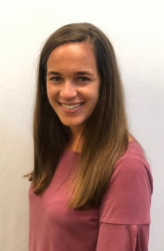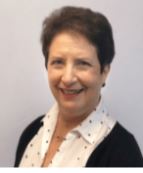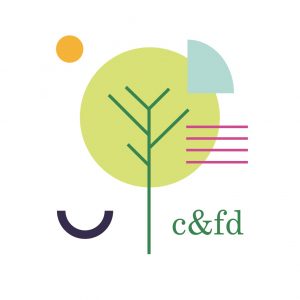By Gail Fennimore and Abby Morton, Child and Family Development
Does someone you love have scoliosis? Learn more about how to recognize signs and symptoms, what a diagnosis means and help raise awareness for treatment methods.
Scoliosis is a medical diagnosis used to describe a significant change in alignment of the spine. There are four typical classifications of scoliosis including adolescent idiopathic, neuromuscular, infantile, and adult age-related. Adolescent idiopathic is the most common of the diagnoses. We will cover that in Part 1 of our series on scolosis.
Adolescent Idiopathic Scoliosis (AIS)
What is it?
Adolescent Idiopathic Scoliosis is the most commonly diagnosed type of scoliosis. Idiopathic scoliosis is a three-dimensional deformity of the growing spine affecting adolescents through adulthood. This means the spine could rotate, tilt forward or backward, and tilt to the right or left. The deformities grow over time resulting in chronic changes in the spinal alignment, with the biggest change occurring around puberty. Scoliosis can occur due to various neuromuscular and orthopedic presentations; however, it is not clear why most childhood scoliosis occurs. Idiopathic scoliosis affects 2-3% of adolescents, with a diagnosis around the age of 10 years, or during years of puberty. Adolescent scoliosis occurs in both boys and girls.
What is the process of diagnosis and testing involved?
School screenings and well-check visits with the pediatrician may include scoliosis screens that indicate a need for further assessment. A confirmed scoliosis diagnosis includes a physical examination, x-ray, spinal radiograph, CT scan or MRI. This will determine the degree of the curve. Visible changes in the body include a horizontal shift of the spin; an asymmetrical shoulder and shoulder blade, trunk or hips; a hump in the rib cage; and changes of natural kyphosis and lordosis curves of the spine. Some adolescents may report having back pain and later discover a scoliotic presentation of the spine; however, back pain is not always associated with a spinal misalignment. The healthcare provider team typically involves the pediatrician, orthopedist, neurologist, and physical therapist.
What is the prognosis?
Early detection of scoliosis is important for monitoring, managing, and gaining a thorough understanding of the body and its changes. The degree of the curve determined upon imaging and the age of detection determine the severity and prognosis. The ultimate goal upon diagnosis is to determine the maturation of the body and prevent the curve from progressing. One is at a higher risk when the skeletal structure is still maturing, as this allows for further growth of the curve and more damage to posture over time. Low risk cases include a small curve and the adolescent nearing complete maturation of the body.
Risks include breathing difficulties, mechanical difficulties with neck and back control, back pain, and body image concerns. Pain can be involved, but this is not always a symptom, as pain is not strongly linked with spinal alignment of adolescents. It is important to follow up with the doctor to monitor changes in the curve, surrounding tissue, and bony alignment.
Treatment
Treatment recommendations include physical therapy exercises, corrective bracing, or surgery for those who qualify. The method and intensity of treatment depends on the severity of the change in spinal alignment. Research heavily supports emphasizing body awareness, lengthening tissue with specific stretches, strengthening and stabilizing the trunk and surrounding muscles, and maintaining awareness of the body over time. In mild cases, treatment includes a home program to follow with patient-specific exercises. In moderate to severe cases, the adolescent may wear a corrective brace for  repositioning to decrease present curve and prevent progression of the curve in addition to routine physical therapy visits. A physical therapist will follow evidence-based treatment methods to address current symptoms, mechanical issues with daily activities, and expectations of posture and abilities as the body grows.
repositioning to decrease present curve and prevent progression of the curve in addition to routine physical therapy visits. A physical therapist will follow evidence-based treatment methods to address current symptoms, mechanical issues with daily activities, and expectations of posture and abilities as the body grows.

Gail Fennimore, PT and Abby Morton, DPT are pediatric Physical Therapists based at Child & Family Development’s Midtown office location. Gail has been in practice since 1974 and joined C&FD in 1994. Abby has been in practice since 2019 and officially joined the team in 2020. Not only are Gail and Abby coworkers, they both graduated from the University of Tennessee Health and Science Center in Memphis, TN.
Child & Family Development

Locations:
Mitdtown:
4012 Park Road, Suite 200
Charlotte, NC 28209
704.332.4834
Pineville:
11940 Carolina Place Parkway, Suite 200
Charlotte, NC 28134
704.541.9080
Website | Facebook | Instagram | Twitter



